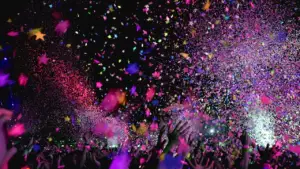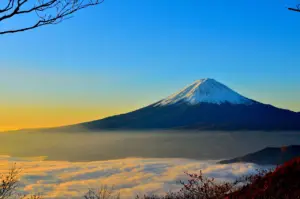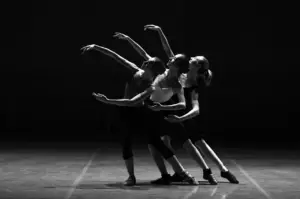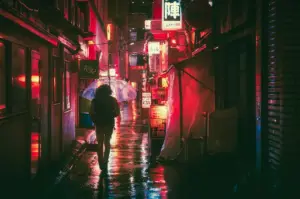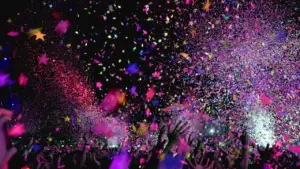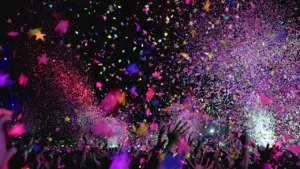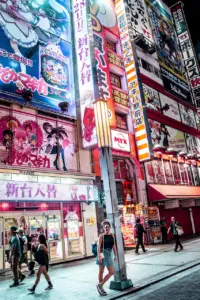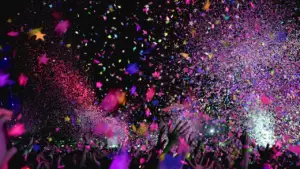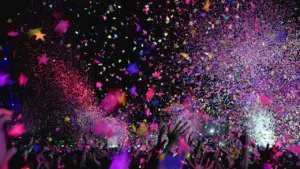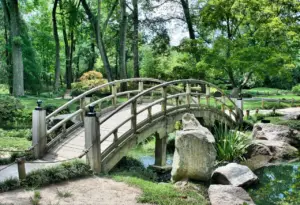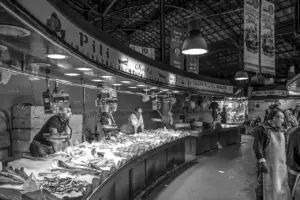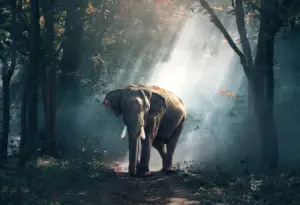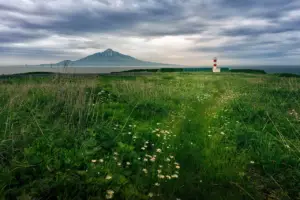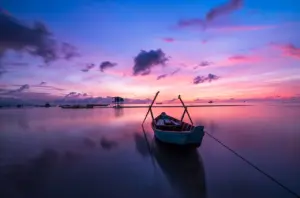Are you looking for a unique cultural experience in Japan? Look no further than the country’s nighttime festivals and events. These celebrations showcase the country’s rich history, traditions, and creativity through stunning displays of light, music, and dance.
From the Kyoto Lantern Festival to the Sapporo Snow Festival, there are plenty of opportunities to witness some of Japan’s most iconic festivals and events after dark.
Whether you’re a history buff, a lover of music and dance, or simply looking for a memorable experience, these festivals are sure to leave a lasting impression.
So, pack your bags and get ready to explore Japan’s vibrant nightlife and cultural scene.
Key Takeaways
- Japan’s nighttime festivals showcase rich history, traditions, and creativity through light, music, and dance.
- Various festivals like Kyoto Lantern Festival, Awa Odori Festival, Sapporo Snow Festival, Gion Matsuri Festival, Kobe Luminarie Festival, Nagasaki Lantern Festival, Yokohama Sparkling Twilight festival, and Hiroshima Peace Memorial Ceremony are the major attractions.
- These festivals feature mesmerizing displays of lights and colors, traditional music and dance performances, grand parades, workshops, and local delicacies, which provide a unique cultural experience.
- Some of these festivals like Kobe Luminarie Festival and Nagasaki Lantern Festival are held in commemoration of the victims of natural disasters and wars, signifying the importance of peace and unity.
Kyoto Lantern Festival
The Kyoto Lantern Festival is a must-see event for anyone visiting Japan. Dating back to the Heian period, this festival has been a part of Kyoto’s cultural heritage for over a thousand years. It takes place in mid-October and is centered around the Yasaka Shrine.
The shrine’s large red gate is adorned with hundreds of lanterns, and the surrounding streets are lined with vendors selling traditional food and souvenirs. As night falls, the lanterns are lit, and a procession of floats adorned with even more lanterns makes its way through the city.
Walking through the ancient city during the festival creates a magical atmosphere with lanterns of all shapes and sizes illuminating the night, transporting you to a world of color and light. It’s a truly breathtaking sight and an experience you won’t soon forget.
Awa Odori Festival in Tokushima
Get ready to experience the lively and colorful Awa Odori Festival in Tokushima! This festival is one of the largest traditional dance festivals in Japan and is held annually from August 12th to 15th.
During this time, the streets of Tokushima come alive with dancers dressed in vibrant costumes, playing traditional music and performing the Awa Odori dance.
Here are four things you can expect to see and do during the Awa Odori Festival in Tokushima:
-
Watch the parade: The festival starts with a grand parade called Yoiyama, where thousands of dancers and musicians march through the streets of Tokushima. It’s a spectacular sight to see, with dancers performing their intricate moves to the beat of the drums and flutes.
-
Join in the dance: Don’t be shy to join in the fun and dance along with the locals. You can even take part in a dance workshop to learn the basic moves of the Awa Odori dance.
-
Taste the local delicacies: The festival is also a great opportunity to try the local delicacies like Tokushima Ramen, Awa Odori Chicken, and Tako-yaki.
-
Shop for souvenirs: The festival stalls sell a variety of souvenirs like traditional crafts, Awa Odori costumes, and festival memorabilia. Don’t forget to pick up a souvenir to remember your experience at the Awa Odori Festival.
Sapporo Snow Festival
You’re in for a treat at Sapporo’s Snow Festival, where you’ll witness incredible snow sculptures that take your breath away. This annual event is held in early February and draws millions of visitors from all around the world.
The festival features sculptures of all shapes and sizes, from cartoon characters to famous landmarks, all carved out of snow by skilled artisans. It’s not just about admiring the sculptures, but also experiencing the winter wonderland atmosphere of Sapporo.
You can enjoy a variety of winter activities, such as snow slides and ice skating, and taste local specialties like hot soup curry and grilled Hokkaido scallops. Don’t miss the chance to see the spectacular illumination of the snow sculptures at night, when they are transformed into a magical world of ice and light.
Sapporo’s Snow Festival is truly a unique and unforgettable experience that will make your winter trip to Japan even more special.
Gion Matsuri Festival in Kyoto
When you’re in Kyoto during summer, don’t miss out on experiencing the lively and colorful Gion Matsuri Festival. This annual event is one of the most famous festivals in Japan, and it lasts for the entire month of July.
The festival is dedicated to the Yasaka Shrine, and it features a grand procession of traditional floats, called yamaboko, that are decorated with intricate designs and colorful fabrics. During the festival, the streets of central Kyoto are filled with crowds of people, food stalls, and entertainment.
On the evenings of July 16th and 17th, the Yamaboko Junko parade takes place, where the floats are pulled through the streets by groups of men dressed in traditional clothing. The festival also includes many other events, such as traditional music and dance performances, tea ceremonies, and exhibitions of local crafts.
With its lively atmosphere and colorful displays, the Gion Matsuri Festival is a must-see event that captures the essence of Japanese culture and tradition.
Kobe Luminarie Festival
The Kobe Luminarie Festival is a dazzling display of light and color that illuminates the city’s streets and buildings. This annual event is held in commemoration of the victims of the Great Hanshin Earthquake that devastated the city in 1995. The festival features stunning light installations that are inspired by Italian architecture and design, as a symbol of the strong bond between Japan and Italy.
The festival usually takes place in early December and attracts millions of visitors from all over the world. The main attraction of the festival is the stunning light show that takes place in the heart of the city. The light installations are arranged in a unique way that creates a magical atmosphere that is truly unforgettable. The festival also features a variety of food stalls and souvenir shops that offer visitors the chance to experience the local cuisine and purchase unique gifts. With its beautiful lights, delicious food, and lively atmosphere, the Kobe Luminarie Festival is a must-see event for anyone visiting Japan during the holiday season.
| Column 1 | Column 2 | Column 3 | Column 4 | Column 5 |
|---|---|---|---|---|
| What | Kobe Luminarie Festival | |||
| When | Early December | |||
| Where | Kobe, Japan | |||
| Why | Commemoration of the Great Hanshin Earthquake victims | |||
| Attractions | Stunning light installations, food stalls, souvenir shops |
Nagasaki Lantern Festival
If you want to experience a mesmerizing display of lights and colors, head to Nagasaki for the Lantern Festival. This event is held every year in February and is one of the most popular winter festivals in Japan. The festival is dedicated to the Chinese New Year and attracts visitors from all over the world.
Here are three things you can expect to see at the Nagasaki Lantern Festival:
-
Thousands of lanterns of all shapes and sizes, from traditional red paper lanterns to modern LED lanterns.
-
Spectacular performances by local artists, including dragon dances, lion dances, and traditional Japanese music.
-
Delicious street food, such as takoyaki (octopus balls), yakisoba (fried noodles), and hot pot dishes. Don’t forget to try the local specialty, champon noodles!
Yokohama Sparkling Twilight
Get ready to be dazzled by the Yokohama Sparkling Twilight festival, where you can experience a stunning display of lights and entertainment. This event is held annually in Yokohama, a city known for its beautiful waterfront skyline.
During the festival, the entire city comes alive with an array of sparkling lights that illuminate the night sky. The Yokohama Sparkling Twilight festival features various activities, such as music performances, parades, and fireworks displays.
The highlight of the event is the magnificent fireworks show, which draws thousands of spectators every year. The fireworks are launched from a barge in the middle of the Yokohama Bay, creating a breathtaking spectacle of colors and patterns.
If you’re looking for a unique and unforgettable way to experience the beauty of Yokohama at night, the Yokohama Sparkling Twilight festival is a must-see event.
Hiroshima Peace Memorial Ceremony
Are you ready to learn about the history and significance of the Hiroshima Peace Memorial Ceremony? This annual event is held on August 6th to commemorate the victims of the atomic bombing that devastated the city in 1945.
During the ceremony, attendees can participate in the lantern floating ceremony and visit the Peace Memorial Museum and Park to further reflect on the importance of peace and remembrance.
Learn About the Ceremony’s History and Significance
You’ll discover the rich cultural heritage of the ceremony and gain a deeper understanding of its significance.
The Hiroshima Peace Memorial Ceremony is an annual event held on August 6th to commemorate the atomic bombing of Hiroshima during World War II. The ceremony is a solemn occasion that brings together survivors, their families, and people from all over the world to remember the victims of one of the most devastating events in human history.
To fully appreciate the significance of the ceremony, here are three things you should know about its history and meaning:
-
The ceremony began in 1947, two years after the bombing, as a way to remember those who died and to pray for peace. It has since become an important part of Japanese culture and a symbol of the country’s commitment to promoting peace and nuclear disarmament.
-
The ceremony includes a moment of silence at 8:15 am, the exact time the bomb was dropped. It is a powerful reminder of the horrors of war and the importance of working towards a peaceful future.
-
The paper cranes that are often associated with the ceremony are a symbol of hope and peace. They were inspired by a young girl named Sadako Sasaki, who died of leukemia caused by radiation exposure. She believed that folding 1,000 paper cranes would grant her wish for peace, and her story has become a symbol of the power of hope and determination.
Attend the Lantern Floating Ceremony
As you walk towards the riverbank, you’ll see thousands of flickering lanterns gently floating downstream in honor of loved ones who have passed on during the Lantern Floating Ceremony. This event takes place every year on Memorial Day in Hawaii and has become a popular tradition in Japan as well. The ceremony begins with a pre-ceremony gathering, where participants can write messages or prayers on the lanterns. Then, as the sun sets, a traditional Hawaiian chant is performed, followed by a moment of silence for the deceased. Finally, the lanterns are released into the water, creating a beautiful and peaceful sight.
To further enhance your experience at the Lantern Floating Ceremony, take a look at the table below. It provides some useful information and tips for attending this event. For example, it’s important to arrive early to secure a good spot and bring a flashlight to help you find your way in the dark. And if you plan on writing a message on a lantern, be sure to bring a permanent marker as pencils and pens tend to smudge on the lantern’s surface. With this guide, you’ll be able to fully immerse yourself in this beautiful and meaningful ceremony.
| Information | Tips |
|---|---|
| Date | Memorial Day |
| Location | Honolulu, Hawaii |
| Time | Start time varies, arrive early |
| Activities | Pre-ceremony gathering, traditional Hawaiian chant, moment of silence, lantern floating |
| Tips | Bring a flashlight, arrive early, bring a permanent marker for lantern messages |
Visit the Peace Memorial Museum and Park
After experiencing the beautiful Lantern Floating Ceremony, take some time to visit the Peace Memorial Museum and Park in Hiroshima.
This historical site commemorates the devastating atomic bombing that occurred during World War II. As you walk through the park, you’ll see various monuments and memorials dedicated to the victims of the bombing and those who have worked towards peace.
The Peace Memorial Museum is a must-see attraction in Hiroshima. Through exhibits and artifacts, you’ll learn about the events leading up to the bombing, the aftermath, and the efforts towards nuclear disarmament.
It’s a sobering experience that will leave a lasting impression and a greater appreciation for the importance of peace. Don’t miss the opportunity to pay your respects and gain a deeper understanding of the impact of war.
Frequently Asked Questions
What is the history behind each of these festivals?
If you’re curious about the history behind Japan’s nighttime festivals, you’ll be pleased to learn that each one has a unique story to tell.
Some festivals, like the Gion Matsuri in Kyoto, have been held for centuries and are steeped in tradition.
Others, like the Sapporo Snow Festival, are relatively new and were created to showcase the local culture.
Many festivals have religious or spiritual origins, like the Awa Odori in Tokushima, which was originally performed to honor deceased ancestors.
Whatever their origins, Japan’s nighttime festivals are a wonderful way to experience the country’s culture and traditions.
What are some traditional foods or drinks that are served at these events?
At Japan’s nighttime festivals and events, you’ll find a variety of traditional foods and drinks to indulge in.
Some of the most popular dishes include yakitori (grilled chicken skewers), takoyaki (octopus balls), and okonomiyaki (savory pancakes with various toppings). For those with a sweet tooth, be sure to try taiyaki (fish-shaped cakes filled with sweet red bean paste) or kakigori (shaved ice topped with syrup and condensed milk).
As for drinks, you can’t go wrong with a cold beer or sake. However, if you’re feeling adventurous, try shochu (a distilled beverage made from various ingredients) or umeshu (a sweet plum wine).
These tasty treats will not only satisfy your hunger and thirst, but also give you a true taste of Japan’s culture and traditions.
Are there any specific dress codes or attire recommendations for attending these festivals?
Attending a festival in Japan is a unique and exciting experience. When it comes to attire, there are a few things to keep in mind.
While there may not be a strict dress code, it’s important to be respectful of the culture by dressing modestly and removing your shoes before entering certain areas. You may also want to consider wearing comfortable shoes as many festivals involve a lot of walking and standing.
As for clothing, lightweight and breathable fabrics are a good choice, especially during the hot and humid summer months. Some festivals may also have specific themes or dress codes, so it’s always a good idea to do some research beforehand to make sure you’re appropriately dressed.
Overall, the key is to be comfortable, respectful, and ready to have a great time.
Are there any age restrictions or limitations for participating in certain festival activities?
When it comes to participating in festivals and events in Japan, there may be certain age restrictions or limitations for certain activities.
For example, some traditional parades or processions may involve carrying heavy floats or participating in physically demanding activities, which may not be suitable for young children or elderly individuals.
Additionally, some events may involve the consumption of alcohol, which is typically restricted to those over the age of 20 in Japan.
It’s always a good idea to check with the organizers of the specific festival or event you plan to attend to see if there are any age restrictions or limitations for certain activities.
How do locals prepare for and celebrate these festivals, and how can travelers respectfully participate in the festivities?
To prepare for and celebrate Japan’s nighttime festivals, locals often spend weeks or even months crafting intricate floats or costumes, practicing traditional dances or music, and gathering with friends and family to share food and drinks.
As a traveler, it’s important to approach these festivals with respect and an open mind. Dress appropriately, follow the rules and customs of each festival, and be mindful of the local culture.
Don’t be afraid to participate in the festivities, whether it’s joining in a dance or trying some local street food. By immersing yourself in the celebrations, you’ll gain a deeper appreciation for Japan’s rich cultural heritage.
Conclusion
So there you have it, a guide to some of Japan’s most stunning nighttime festivals and events.
From the colorful and lively Awa Odori Festival in Tokushima to the serene and beautiful Nagasaki Lantern Festival, Japan has something for everyone.
Whether you’re looking to experience the excitement of the Sapporo Snow Festival or the history and tradition of the Kyoto Lantern Festival, these events are sure to leave a lasting impression.
So why not plan your next trip to Japan around one of these incredible festivals and see for yourself the magic that comes alive after the sun goes down.
















